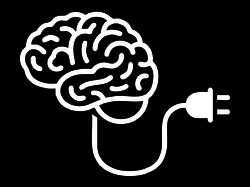The rapid evolution in machine intelligence has delivered a Cambrian explosion of user experiences. New “species” of interfaces roam our screens—copilots, agents, chatbots, assistants, tools, radically adaptive interfaces, and on and on. It’s noisy, chaotic, exciting… the start of something new, even if it’s not yet clear what that “something” will become.
What are the new design patterns, and which old ones fall away? How do you get your head around all the different AI-mediated experiences you might put to work? How do you name and organize those experiences? And how do you develop an intuition for how and when to use each interaction paradigm?
It helps to have a framework to get your bearings. In our intro to Sentient Design, Veronika and I describe Sentient Design like so:
Sentient Design refers to intelligent interfaces that are aware of context and intent so that they can be radically adaptive to user needs in the moment. Those are the fundamental attributes of Sentient Design experiences: aware and radically adaptive.
We supplement those core attributes with a handful of characteristics that travel with these experiences: collaborative, multimodal, continuous & ambient, and deferential. As a collection, we’ve found these to be helpful levers and dials to evaluate Sentient Design opportunities—and perhaps especially to develop design principles around a feature or product.
But this collection of characteristics isn’t exactly concrete, is it? While they describe the vibe of Sentient Design experiences, they don’t describe their form—their interaction, functionality, and posture. What shapes can different AI-mediated experiences take, and with what effect?
So, what’s the shape of Sentient Design? Turns out it’s a triangle:

Mapping the landscape
Big thanks and huge props to Matt Webb for developing the visual framework behind this triangle diagram and sharing it here: Mapping the landscape of gen-AI product user experience. The read is worth your time—and so is a re-read. Highly recommended.
I made a few tweaks from Matt’s version that helped the diagram click a bit more for me, but most of the diagram shown above came directly from Matt’s giant brain and generous spirit. The triangle plots AI-mediated experiences based on how much each experience blends three characteristics:
- Grounded. It has the info it needs to deliver reliable results. (Matt called this “RAG or large context.”)
- Interoperable. It can share data and instructions with other systems. (Matt called this “structured generation.”)
- Radically adaptive. It morphs in real time to user needs and context. (Matt called this “real-time.”)
Of these attributes, “radically adaptive” is the one that’s particularly new and exciting for interaction design. It’s a core quality of Sentient Design experiences: the ability for intelligent interfaces to conceive and compile the experience in real time based on intent and context in the moment. But let’s not undersell “grounded” and “interoperable.” While those are hardly new, recent leaps in intelligence and capability have changed the nature of those characteristics. Generative AI has shown that when you give a system enough grounding in a specific domain—training in a sufficiently large and relevant data set, for example—it can faithfully create images, text, speech, music, etc., on demand. Same with interoperability: when you crank up a system’s smarts for interacting with other systems, you get autonomous agents. New things are happening, even in familiar areas.
Dialing these three attributes up and down yields a rich set of features, but when you pull up to a higher altitude, four fundamental archetypes emerge. Matt writes:
- Tools. Users control AI to generate something.
- Copilots. The AI works alongside the user in an app in multiple ways.
- Agents. The AI has some autonomy over how it approaches a task.
- Chat. The user talks to the AI as a peer in real time.

Each of these (overlapping) archetypes suggests specific functionality, but just as interesting, they also present their own posture and manner to the user. Tools are controlled by the user through prompts or controls to get specific results (often through iteration that sculpts the result). Agents flip that script and do their work with little oversight or collaboration until they return with their results. Chat presents as a peer to the user with conversation that can go in any direction. Copilots stake out the middle of the diagram and blend attributes of all of these to provide collaborative support of your work in real time.
Descending to a lower altitude with increasing detail, specific nodes in the diagram light up to represent a cluster of AI-mediated experiences, each with its own emerging design patterns, opportunities, and constraints. (Matt provides lots of examples for each.)
The map is not the territory
This framework is hugely useful, but it remains (like all maps) a simplified representation that cannot capture every detail of the actual terrain. This diagram isn’t comprehensive—and it can’t be, thanks to a limitation of the triangle itself. In so-called ternary diagrams like this one, increasing the level of any two dimensions (grounded and interoperable, for example) necessarily reduces the third (radically adaptive). Mapping 3D attributes in a 2D chart means we lose some depth. That means this map can’t plot an AI experience with all three attributes maxed out. (Wait… would that be artificial general intelligence???)
So the intent is not to catalog every possible AI interaction model—and that’s okay! Think of the diagram as more of a compass than a map. It provides orientation and suggests directions for exploration rather than a complete catalog of what’s possible. Matt describes it as a thinking tool instead of a solution engine: “So it’s not a tool that gives me answers, it’s not that kind of map. But it helps me communicate, and it’s a decent lens, and it’s a helpful framework in a workshop context.”
I’ve found the map helpful in my own practice for developing ideas and concepts. I take the problem to solve and then roam the triangle to workshop how different AI postures could address it. I’ve also used it for product positioning by mapping clients’ competitors to identify market gaps or to reinforce our clients’ differentiating features.
Speaking of features, that’s the level at which this diagram operates. This is a map of features more than products. While some products might be single-feature, many more will include several at once. Even AI chat products like Claude or ChatGPT are more than “just” chat; both incorporate tools and agents to support a broad range of requests. Use the diagram to identify individual features to help the user overcome different frictions throughout the entire journey.
Tailored for Sentient Design
Inspired by Matt’s original framework, I played with some new labels for the three points to better suit the Sentient Design perspective, focusing more on experience attributes than technical capabilities:
- Radically adaptive replaced “real time” in Matt’s version to emphasize the transformative nature of Sentient Design experiences, more than just their temporal aspect.
- Grounded replaced “RAG / Large context” to align with Sentient Design’s awareness of context and intent; grounded models understand context better.
- Interoperable replaced “Structured generation” to underline the resulting ability to work across systems and modalities, rhyming with Sentient Design’s collaboration.
This shift felt helpful to me, as it aligns with how Sentient Design experiences manifest rather than how the underlying tech is implemented. (Of course, the technical capabilities inform and shape the experience, but from a user perspective, they feel secondary.)
I also labeled the three sides of the triangle to call out the qualities that emerge in the experiences identified along the edges:
- Collaborative = Radically adaptive + Interoperable
- Autonomous = Interoperable + Grounded
- Iterative = Radically adaptive + Grounded
Note that these edge labels are not meant to suggest opposition to the point across the way. “Collaborative” is not the opposite of “grounded,” and “autonomous” is not the opposite of “radically adaptive.” Instead, the labels are meant only to call out a common characteristic that emerges across that cluster of features. But I love that working with the diagram brings up those kinds of thought experiments—are they opposites, and what would that mean? Again, a thinking tool more than a catalog.
Here be dragons
It’s also a thinking tool for exploring what’s not on the map. The diagram organizes what already exists, not what we’ve yet to imagine, but it can still work as a compass for helping us think our way there. What remains uncharted is just as intriguing as the territory that’s explicitly plotted.
Even within the mapped experiences, there’s more detail to explore than a ternary diagram allows. I’ve found it helpful to pluck these features out of the diagram and see how they might evolve if you dial from low to high along each of the different attributes. It’s an adjacent use of the diagram that helps to explore new opportunities.
For example, let’s consider how this works with the NPC experience. (NPC means “non-player character,” a term from the gaming world that refers to an automated character with pre-determined behaviors. In more general Sentient Design experiences, NPCs might appear as Slack bots, Figma users, or Miro sidekicks; they have a user account and some agency, but the system runs them.)
Here’s what happens when we pull NPCs out of the map and waltz them along the spectrum of each of our three attributes:

Explore and ask questions
The Sentient Design triangle is not a static map but a dynamic terrain for imagination and conversation. It invites us to question, explore, and redefine what’s possible in AI-mediated experiences. At a time when too many are rushing in with hurried solutions, devices like this encourage us to ask better questions and evaluate different postures to address the problem at hand. This may not be a complete taxonomy for our AI Cambrian explosion, but we’re at least developing the language to discuss the differences between these emerging UX species—and identify some weird platypus combinations.
Looking for help on the strategy, design, or development of AI-powered products and features? That’s what we do! Get in touch to learn more about our engagements, workshops, and Sentient Design sprints, or sign up for our newsletter to keep up with everything Big Medium is sharing about AI and Sentient Design.





